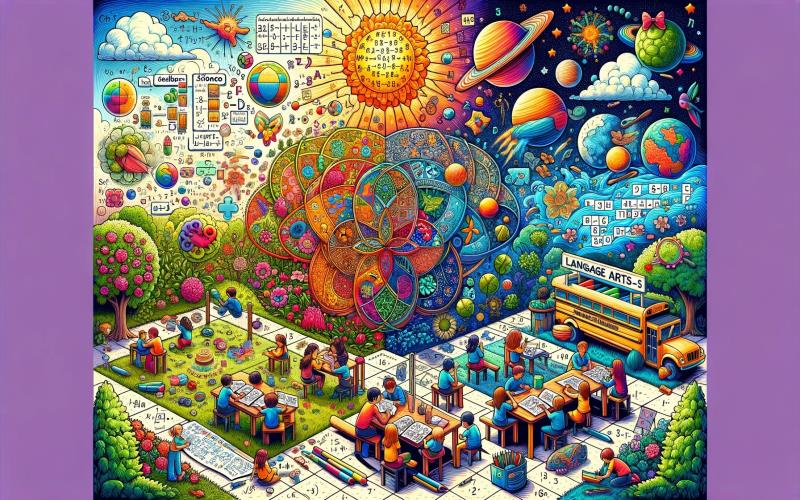Creativity is the cornerstone of engaging and effective teaching in the vibrant education world. “Cross-Curricular Creativity: Integrating Coloring Pages into Math, Science, and Language Arts” delves into the innovative use of coloring pages to enhance learning across various subjects.
This approach makes learning more enjoyable for students and fosters a holistic understanding of complex concepts through art.
Here, we explore strategies for educators to weave coloring activities into the fabric of their curriculum, offering students a multi-disciplinary learning experience.
Math: Patterns and Shapes Come to Life
In math, coloring pages can transform abstract concepts into tangible learning experiences. For instance, geometric coloring pages allow students to explore shapes, symmetry, and patterns, reinforcing their understanding of geometry in a visually stimulating way.
Educators can further innovate by designing coloring activities requiring students to solve equations or puzzles to reveal the colors used in a pattern. This combines problem-solving skills with artistic expression.
Science: Visualizing the Invisible
Science thrives on curiosity and exploration, aspects that coloring pages can greatly enhance. For younger students, coloring pages featuring the plant life cycle, animal habitats, or the human body can serve as an introduction to biology.
For older students, intricate diagrams of plant cells, the solar system, or even chemical structures offer a way to visualize and internalize scientific concepts.
By coloring these diagrams, students engage with the material on a deeper level, facilitating better retention and understanding.
Language Arts: Bringing Stories to Life
Language arts encompass the vast territories of reading, writing, and comprehension, all of which can be enriched through coloring activities. Scenes from classic literature or historical events can be transformed into coloring pages, allowing students to visualize and connect with the material creatively.
For younger learners, letter coloring pages offer a fun way to learn the alphabet and enhance letter recognition. Pairing these coloring activities like Bratz cheerleading with storytelling or writing assignments can further bridge the gap between visual art and language skills.
Strategies for Educators
To successfully integrate coloring pages into the educational process, educators can:
- Align with Learning Objectives: Choose or create coloring pages that complement the lesson’s objectives.
- Interactive Projects: Encourage students to create their coloring pages based on research projects, fostering a sense of ownership and deeper engagement with the subject matter.
- Discussion and Reflection: Use completed coloring pages as a basis for class discussions, presentations, or reflective writing assignments, encouraging students to articulate their learning and insights.
- Collaborative Learning: Organize group coloring projects to promote teamwork and collaborative learning, especially for complex diagrams or large scenes.
- Incorporate Technology: Utilize digital tools and platforms where students can access, color, and even design their pages, bridging traditional art activities with modern technology.
Integrating coloring pages into math, science, and language arts is a testament to the versatility and power of creativity in education. By employing coloring as a cross-curricular tool, educators can provide students with a more engaging, comprehensive, and enjoyable learning experience.
This approach not only aids in the conceptual understanding of various subjects but also encourages students to explore the interconnectedness of knowledge, fostering a lifelong love of learning and discovery. Source: ESLE

